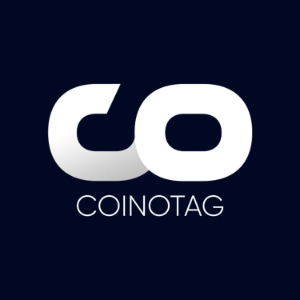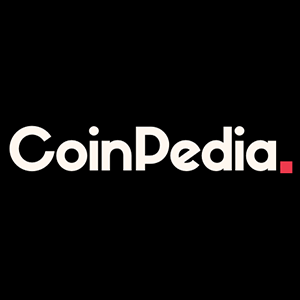Tokenized Funds See Astonishing $5.7B Growth, Moody’s Highlights Institutional Crypto Surge
7 min read
BitcoinWorld Tokenized Funds See Astonishing $5.7B Growth, Moody’s Highlights Institutional Crypto Surge The world of finance is undergoing a quiet revolution, and a recent report from Moody’s shines a spotlight on one of its most rapidly evolving corners: Tokenized Funds . If you’re following the intersection of traditional finance and digital assets, the numbers are becoming impossible to ignore. Moody’s indicates that tokenized short-term liquidity funds have experienced remarkable growth, now holding a staggering $5.7 billion in assets under management. This isn’t just a fleeting trend; it signals a significant shift driven by sophisticated players. What Are Tokenized Funds and Why the $5.7B Surge? At its core, a tokenized fund represents ownership in a traditional financial asset or portfolio that has been recorded on a blockchain. Think of it as putting a digital wrapper around something like a money market fund. The Moody’s report specifically highlights the surge in tokenized short-term liquidity funds. These are typically funds backed by highly stable, low-risk assets such as U.S. Treasurys or government agency debt. The reported growth from virtually zero in 2021 to $5.7 billion today is nothing short of explosive. This rapid expansion is primarily attributed to increasing demand from institutional investors. Why are large financial institutions and corporations turning to tokenized versions of familiar assets? Enhanced Liquidity: Tokenization can potentially make it easier and faster to transfer ownership of fund units, improving liquidity compared to traditional settlement processes. Operational Efficiency: Leveraging blockchain technology can streamline back-office operations, reduce manual processes, and potentially lower transaction costs. Accessibility: While focused on institutions here, tokenization generally allows for easier fractional ownership and broader access, although for these specific funds, the focus is on large-scale transfers and management. Transparency: Blockchain’s distributed ledger can offer greater transparency regarding ownership and transaction history, depending on the specific implementation. These benefits resonate strongly with institutional players looking to optimize their treasury management and investment strategies in a digital age. The $5.7 billion figure is a concrete manifestation of this growing institutional appetite. The Driving Force: Institutional Crypto and Digital Asset Adoption The rise of Tokenized Funds is inextricably linked to the broader trend of Institutional Crypto adoption. While much of the public discourse around institutional involvement focuses on direct Bitcoin or Ethereum investments, a significant parallel development is the exploration and implementation of blockchain technology for traditional assets. Institutions aren’t just buying crypto; they are actively exploring how distributed ledger technology (DLT) can make existing financial processes better. Tokenizing assets like fund shares is a prime example. It allows institutions to leverage the benefits of blockchain – immutability, transparency, programmability – without necessarily taking on the volatility risks associated with native cryptocurrencies. The demand isn’t coming from speculative trading desks alone. Treasury departments, asset managers, and large corporations are looking for ways to manage their cash and short-term investments more efficiently. Tokenized money market funds offer a compelling solution, providing exposure to stable assets while utilizing cutting-edge technology for settlement and management. This integration of blockchain into traditional workflows is a key pillar of the evolving Blockchain Finance landscape. Key Players Shaping the Tokenized Funds Landscape The Moody’s report mentions several key players who are pioneering this space. Their involvement underscores the seriousness and institutional backing behind this trend. Company Role/Example BlackRock Launched the BUIDL fund, a tokenized money market fund on the Ethereum network. Franklin Templeton An early mover with their OnChain U.S. Government Money Fund (FOBXX), available on multiple blockchains. Superstate Focuses on bringing traditional investment vehicles, like Treasury bills, onto the blockchain. Ondo Finance Offers tokenized exposure to U.S. Treasurys and other yield-bearing assets. Circle While primarily known for the USDC stablecoin, their infrastructure and focus on regulated digital dollars are crucial for settling and interacting with tokenized funds. The participation of global giants like BlackRock and Franklin Templeton signals a strong vote of confidence in the potential of Asset Tokenization for mainstream finance. These players are not just experimenting; they are launching products that are attracting significant capital from their client bases. Understanding the Benefits of Asset Tokenization While the Moody’s report focuses on liquidity funds, the principles of Asset Tokenization apply across various asset classes. The benefits driving the growth in funds extend to real estate, art, private equity, and more. Let’s delve a bit deeper into why tokenization is seen as transformative: Increased Liquidity: By breaking down assets into smaller, easily transferable tokens, tokenization can create liquidity for traditionally illiquid assets. For funds, it streamlines the process of subscribing and redeeming shares. Fractional Ownership: High-value assets can be divided into tokens, making them accessible to a wider range of investors who might not be able to afford the entire asset or a large block of fund shares. Faster Settlement: Transactions on a blockchain can settle in minutes or seconds, significantly faster than the days it can take in traditional financial systems. This is a major driver for efficiency in money market funds. Lower Costs: By automating processes and removing intermediaries, tokenization can potentially reduce transaction fees, administrative costs, and operational overhead. Greater Transparency and Auditability: Transactions recorded on a public or permissioned blockchain provide a transparent and immutable record, simplifying audits and increasing trust. Enhanced Security: Cryptographic security inherent in blockchain technology can protect against fraud and unauthorized access. Programmability: Smart contracts can automate various processes, such as dividend distribution, voting rights, or compliance checks, embedded directly into the token. These advantages collectively make a compelling case for the continued exploration and adoption of tokenization across the financial spectrum, with Money Market Funds serving as an early, successful use case. Addressing Risks in Tokenized Money Market Funds Despite the impressive growth and clear benefits, the Moody’s report also rightly points out that risks remain. It’s crucial to approach the growth of Tokenized Funds with a clear understanding of the challenges: Blockchain Security: While blockchain is inherently secure, the platforms, smart contracts, and associated infrastructure are not immune to vulnerabilities, hacks, or bugs. Ensuring the security of the underlying technology is paramount. Regulatory Uncertainty: The regulatory landscape for tokenized assets and blockchain-based finance is still evolving in many jurisdictions. Lack of clear rules can create legal and operational risks for issuers and investors. Smart Contract Risk: Tokenized funds rely on smart contracts to automate processes. Errors or vulnerabilities in the code could lead to significant issues. Operational Risks: Integrating blockchain systems with existing financial infrastructure presents technical and operational challenges. Counterparty Risk: While the underlying assets (like Treasurys) are low risk, there is still counterparty risk associated with the platform providers, custodians, or issuers of the tokenized fund. Market Risk: Although the focus is on stable assets, the value of the underlying assets can still fluctuate, albeit typically less so than riskier investments. The token price could also be affected by factors related to the blockchain platform itself. Managing these risks requires robust technical infrastructure, stringent security audits, clear legal frameworks, and experienced operational teams. As the sector matures, addressing these challenges will be key to sustaining growth and building broader trust. The Future of Tokenized Finance: Beyond Money Market Funds? The success seen in tokenizing short-term liquidity and Money Market Funds is likely just the beginning. Moody’s highlights the potential for this sector to expand further, particularly with the adoption of tokenized cash-sweep solutions. This is where idle cash held by corporations or institutions is automatically invested into tokenized low-risk funds, maximizing yield and efficiency. Looking ahead, the infrastructure and expertise being built around tokenized funds can pave the way for tokenizing other asset classes. We could see more tokenized bonds, real estate funds, private credit, and even equities becoming more commonplace on blockchain networks. This expansion will depend heavily on regulatory clarity, technological advancements, and continued institutional comfort with Blockchain Finance . The $5.7 billion milestone is not just a number; it’s a proof point. It demonstrates that there is real, significant demand from the most conservative corners of finance for the efficiencies and capabilities that tokenization and blockchain technology can offer. While the journey involves navigating complex risks, the trajectory suggests that tokenized assets will play an increasingly important role in the future of finance. Conclusion: Tokenized Funds – A New Era for Institutional Capital Moody’s recent report provides compelling evidence that Tokenized Funds are rapidly moving from concept to reality, now commanding $5.7 billion in assets. This surge is primarily fueled by institutional demand for more liquid, efficient, and technologically advanced ways to manage short-term capital, leveraging the power of Asset Tokenization and Blockchain Finance . Key players like BlackRock and Franklin Templeton are validating the model by launching their own offerings. While challenges related to blockchain security and regulatory clarity persist, the foundational benefits of tokenization – from enhanced liquidity to operational efficiency – are proving attractive to sophisticated investors. The success of tokenized Money Market Funds serves as a powerful case study for the broader potential of digital assets in traditional finance. As institutions continue to explore and adopt these solutions, we can expect the tokenized asset landscape to evolve and expand, potentially transforming how capital is managed and transferred globally. To learn more about the latest institutional crypto trends, explore our article on key developments shaping blockchain finance institutional adoption. This post Tokenized Funds See Astonishing $5.7B Growth, Moody’s Highlights Institutional Crypto Surge first appeared on BitcoinWorld and is written by Editorial Team

Source: Bitcoin World



